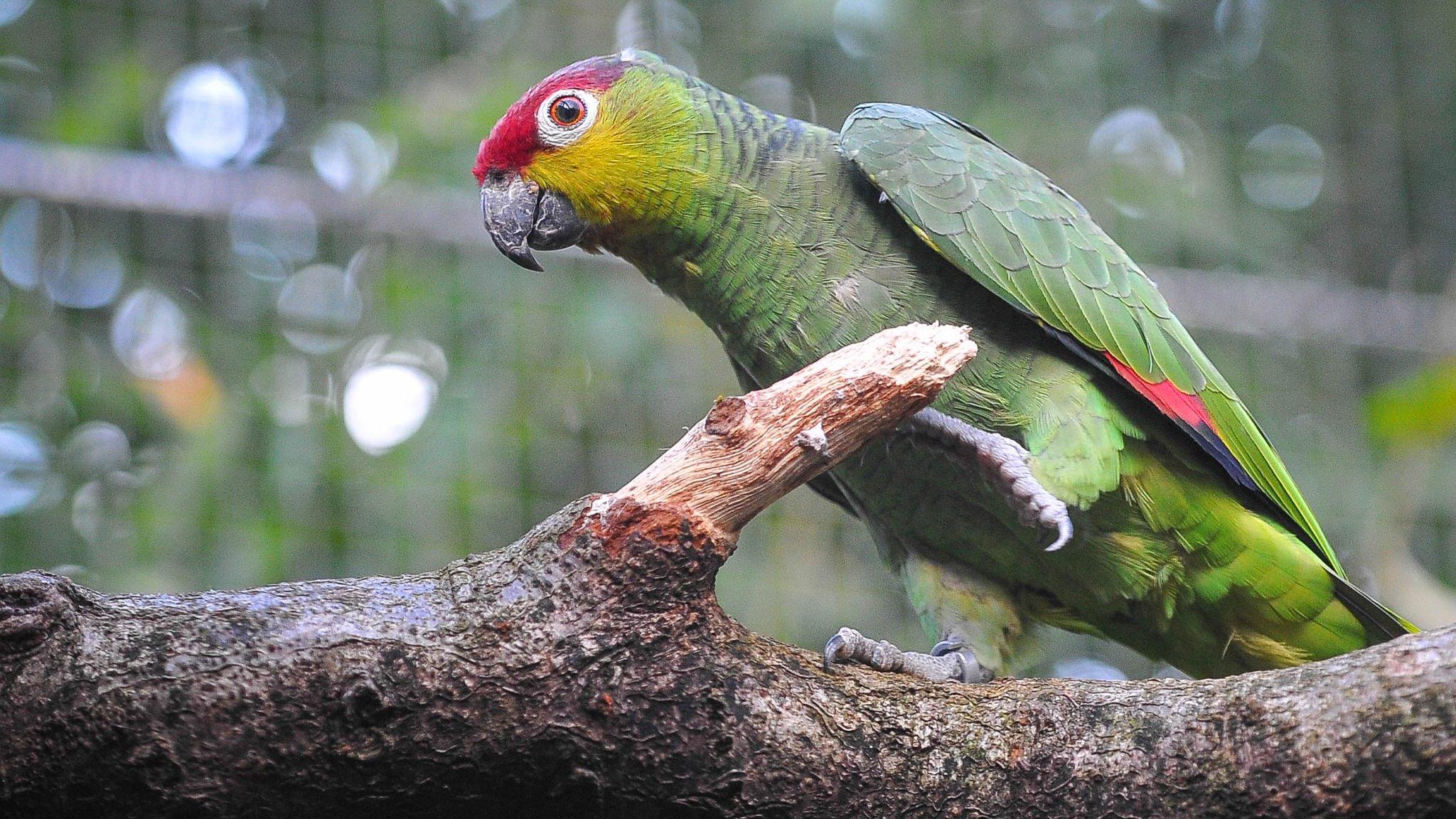Study offers snapshot of rare Ecuador Amazon parrot
- Published

Researchers came back with "more questions than answers" about the Ecuador Amazon parrot
UK researchers that headed to South America to learn more about one of the world's rarest parrots have returned with "more questions than answers".
A team from Chester Zoo spent three weeks studying Ecuador Amazon parrots.
The parrot was only reclassified as a species in its own right in December, before which it was deemed to be a subspecies of a common group of birds.
Only 600 individuals are estimated to remain in the wild, prompting the new species to be listed as Endangered.
"The truth is that we came back with far more questions than answers," explained expedition leader Mark Pilgrim, director general of Chester Zoo.
"Suddenly, there are a whole number of things that we didn't expect and we now have questions about."
One example was how the birds chose their roosting sites amid the mangroves of Cerro Blanco, located along the coast of western Ecuador.
"We knew from literature from our previous visit that the parrots roosted in the mangroves and flew to the dry forests to feed," Dr Pilgrim told BBC News.
"The assumption was that they did that to protect themselves from predators that were not found on the mangrove islands, but they fly very far out into the mangroves.
"Shrimp farms use bird scaring devices, which are designed to frighten the herons and shore birds and stop them eating the farms' stock.
"So is this affecting [the parrots'] behaviour? We don't know."
Lovesick parrots?
The study also raised questions about the birds' breeding behaviour.
Based on data from earlier surveys and literature, the researchers assumed that they would be monitoring the parrots during the breeding season.

During the breeding season, it is assumed that "pairs" in flight indicated non-breeding birds
"However, we did not find any proof that they were breeding at that time," explained Dr Pilgrim.
The team monitored the daily flights made by the parrots from the mangroves to the dry forests, and the return journey at the end of each day.
"One of the methods used to assess how many of the birds are breeding was to count how many single birds were making the flight.
Although the birds fly in large groups, Dr Pilgrim said it was relatively easy to spot pairs within the group. During the breeding season, it had been assumed that females did not leave their nests in the dry forests because they were incubating eggs or feeding chicks.
"So during the breeding season, you get a higher proportion of single birds travelling back to the mangroves than you do during the non-breeding season," he suggested.
However, the team only recorded 11% of the birds in flight as "singles".
"That could suggest that as few as 11% of the population were reproducing, which seems very low," he observed.
However, Dr Pilgrim said that there was not 100% certainty that when the female is on the eggs in nests within the forest that the male still travels back to the mangroves.
"Maybe not all of them do travel back; maybe some of them stay in the forests in close proximity or share the nest with the female," he said.
"So while there is some concern, there is still a lot to do before we can make clear and bold statements about what is happening there."
Double-edged sword
But he added that there were some clearly positive aspects, as far as the remaining habitat was concerned.
"The dry forest area of Cerro Blanco appears to be extremely well protected; there is certainly a lot of ranger activity," he said.
"All the time we were in the forest, we did not come across a lot of people who could be potentially poaching or tree felling.
"In that sense, it is very reassuring that the area appears to be well protected."
Although a vast majority of the nation's mangrove habitat was destroyed in the past to clear the way for shrimp farms, Dr Pilgrim said that the remaining sites were very well protected.
However, he added: "The estimated total population for this species is about 600. But the sub-populations are less than 250 birds. So, based on our findings, the IUCN is now classifying the birds as an endangered species."
He acknowledged that the classification could be considered as a double-edged sword.
Although its continuing existence on the planet was uncertain, it did mean the species would be considered as a conservation priority, attracting resources.
Before the Ecuador Amazon parrot (Amazona lilacina) was recognised as an individual species, it was considered to be a subspecies of the four-strong Amazona autumnalis group that had a combined population of about five million, meaning it was not deemed to be a conservation priority.
Dr Pilgrim said that plans were in place to repeat the Cerro Blanco survey every third year in order to build up a long-term dataset that would allow researchers to monitor the parrots' population dynamics.
He observed: "The forest is protected, the mangrove is protected, there does not appear to be a huge amount of nest predation from people, so - in that sense - there is nothing drastic going on that is threatening them right now."
- Published13 December 2013

- Published12 March 2013
